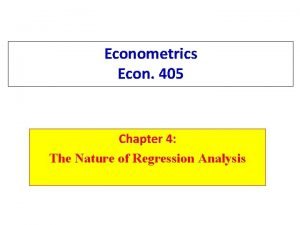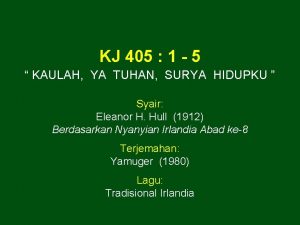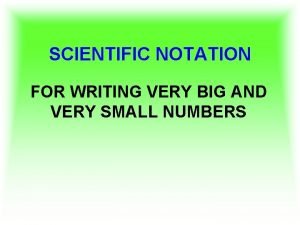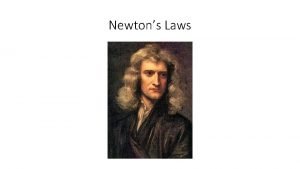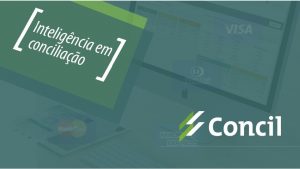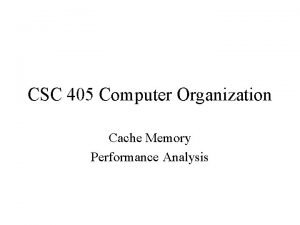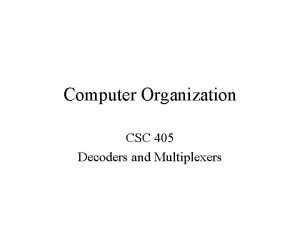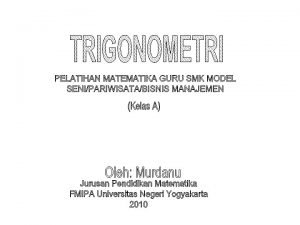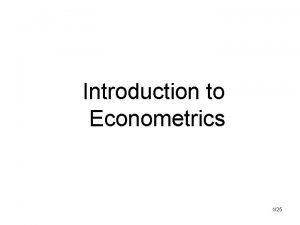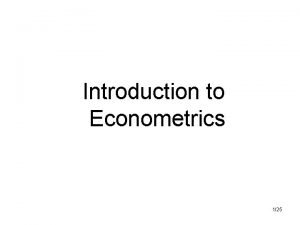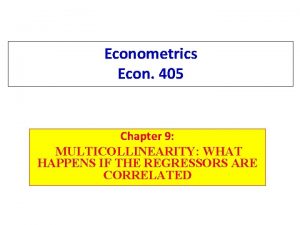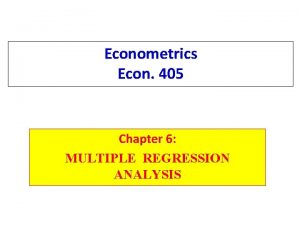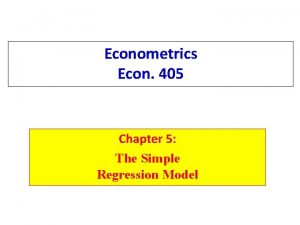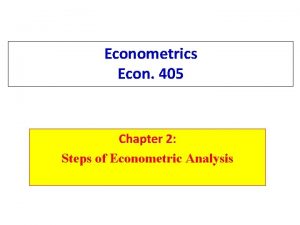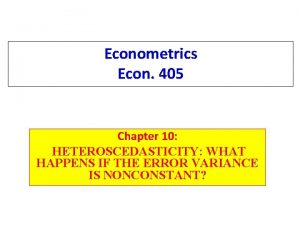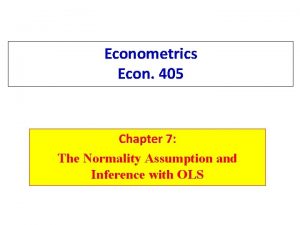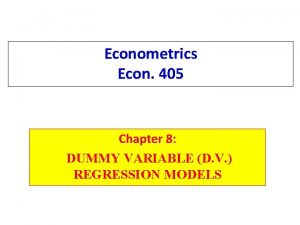Econometrics Econ 405 Chapter 1 Introduction to Econometrics













- Slides: 13

Econometrics Econ. 405 Chapter 1: Introduction to Econometrics

I. Why learning Econometrics ? • The economist researcher will be the one to investigate the economic phenomena. • The conducted research by the economist should be organized, systematic, and databased examination. • Precisely, investigation should be into a specific problem, undertaken with the purpose of finding answers or solutions to it.

Ø The Seven-Step Process in the Research Method: 1 - Identify a broad problem area 2 -Define the problem statement ( based on theory) 3 - Theory formulation according to previous studies 4 - Develop hypotheses (the hypothesis that can be tested to determine if the statement would be supported) 5 - Data collection 6 -Model (Data) to be tested ( Econometrics model) 7 -Interpretation of data analysis

Ø Econometrics as a field is based on: “theoretical-quantitative” & “empirical -quantitative” approach to economic problem.

II. The economist’s Approach to Statistical Analysis • Econometrics helps economists to see economics in different light when standard theory just wasn’t helping much. • Econometricians are applied economists using tools developed by theoretical econometricians to examine economic phenomena. • Econometrics teaches the art of using statistical tools to address important economic policy issues

III. Discovering Goals of Econometrics Analysis • Emphasizing a combination of theoretical proofs and practical applications. • Making Econometrics accessible, useful, and interesting • Getting the data to speak!! • Using some econometrics software.

IV. Evaluating Economic Relationships • Obtaining good quantitative result counts on using reliable and adequate data as well as a valid economic theory. • Economics provides theoretical tools you use to evaluate economic relationships and make qualitative predictions of economic phenomena using the “ceteris paribus” assumption. • What does “ceteris paribus” mean ?

IV. Evaluating Economic Relationships • Recall previous courses in economics: Macroeconomic Theory Microeconomic Theory ü Application (1) – Think of an example within theory? – What are the two sides of the relationship? – How the “ceteris paribus” works in your example? – How can econometrics be applied in the example?

Ø Using economic theory to describe outcomes & make predictions: § Applied research in econometrics is differentiated from other applications of statistical analysis (HOW !!) § Econometrics connects your interest question to some outcomes or predictions of future events (HOW !!) § The econometrics study should be linked to an economic model (obtained from the economic theory).

§ Economic model should consist of: Ø The outcome of interest (Dependent Variable, Y) Ø Causal factors (Independent variables, Xs) ü Application (2) - Go back to your selected example, what is the dependent variable and what are the independent variables

Ø Recognizing the importance of data type: § The data used to estimate and test your econometrics model is typically classified into one of the three possible types: 1) Cross Sectional Data 2) Time Series Data 3) Panel Data

1) Cross Sectional Data Measurements for individual observations (persons, households, firms, countries, firms…. so on. ) at a given point of time. 2) Time Series Data Measurements on one or more variables (GDP, interest rate, unemployment…. so on. ) over time at a given space (like a specific country or firm). 3) Panel Data Consisting of a time series data for each cross-sectional unit in the sample. Or measurements for individual observations over a period of time ( days, months, quarters, or years).

ü Remember: q You should always be aware of your data type. q The type of data used may influence how you estimate your econometrics model. q Specialized techniques are usually required to deal with time series and panel data.
